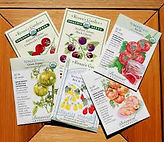March

What a very frosty February we had! Soil and bulbs love it as it gives an opportunity to break down the clumps of earth and help good, strong development in bulbs planted last autumn. March, though, does mean that every now and again there is that scent of Spring, blossom buds and thickening and life is beginning to feel a lot better. I don't particularly mind the cold and do appreciate that it's important to a gardener - as long as hands and feet are well insulated

Shrubs that are flowering in March include, forsythia, camellia, ceanothus, philadelphus and mahonia. Amongst trees showing their blossom are cherry, magnolia, laburnum and crab apple. Crocus, muscari, cyclamen and scilla should be showing, whilst narcissi are well on their way.

Cornus, willow and buddleia need to be cut back hard this month to allow for strong growth and, in the case of cornus, enable brightly coloured stems later in the Spring. Buddleia benefits by allowing rising nutrients to feed forming flower stems and their buds - a straggly, thin branched bush with few flowers doesn't look too pretty! Roses, too, need their stems cut back to at least 2 buds for the same reason. As always, cut out any weak or damaged stems and make sure no stems are touching as this can cause bruising.


March is a good time to dig up and split polyanthus as their flowers are now fading. Use a couple of hand forks or your hands to split the plants and re-plant a couple of inches apart where needed. The split plants could also be potted up and kept to one side for later planting in borders or containers.

Sow up perennials now with moist seed compost very thinly with only a slim layer of compost on top and cover with opaque polythene. Keep in a semi-light place. Do check regularly and, as soon as green shoots appear, move into full light. Use caution with watering as they will be better on the dry side than too wet. Too high a temperature, however, could result in thin, weedy seedlings and what you want are short, bushy ones which, at about ½” high, need to be thinned to give each seedling room to grow strong, healthy roots and upper greenery.


It's also time for hardy and half-hardy annuals to be sown, including a couple of trays of native wildflowers that could then be scatter planted around the garden. French marigold are particularly beneficial potted up in the veggie patch as a companion plant. The earlier you can do this, the longer flowering period could be achieved – always a bonus! If you don’t want to sow your own, order up plugs of annuals for borders, pots and hanging baskets or make a visit to the garden centre as their displays will be now bursting with choice.


Sow up tomatoes, peppers, chillis if not done last month. I use the tall modules for these as they provide ample room for root growth and those degradeable ones are very good as you don't disturb the roots when planting out. Most seeds require reasonable warmth to germinate, but then like a period of cold to concentrate on roots rather than stem growth. Use a seed compost, well sieved, rather than a general one as the balance of nutrients is better suited to young seedlings. Water lightly and don’t let the seed compost dry out.

Given recent weather conditions, lawn mowing is probably best left for a while, but ensure that the grass surface is kept clear of debris as this can cause all manner of problems later on. Lawn edges seem to keep growing, so trim back. Check that your mower is in good, clean condition and ready for use when you are.

Towards the end of the month, chitted potatoes can be planted out in beds or bags – the latter really does work well if there is a shortage of space and can be placed almost anywhere in the garden. Other vegetables that can be sown this month include lettuce, carrot, salad onion, beetroot, spinach. In fact, provided your veggie plots are clear of weeds and have been healthily fed, most of your annual vegetables can be sown this month. The exceptions are peas and green beans that are best left until April.

I can hardly wait to be able to sit back outside after working in the garden and, hopefully, by April, I shall be able to do just that, even if jacket and gloves still need to be worn - though wearing the latter does make it a tad more difficult to pick up the glass!

